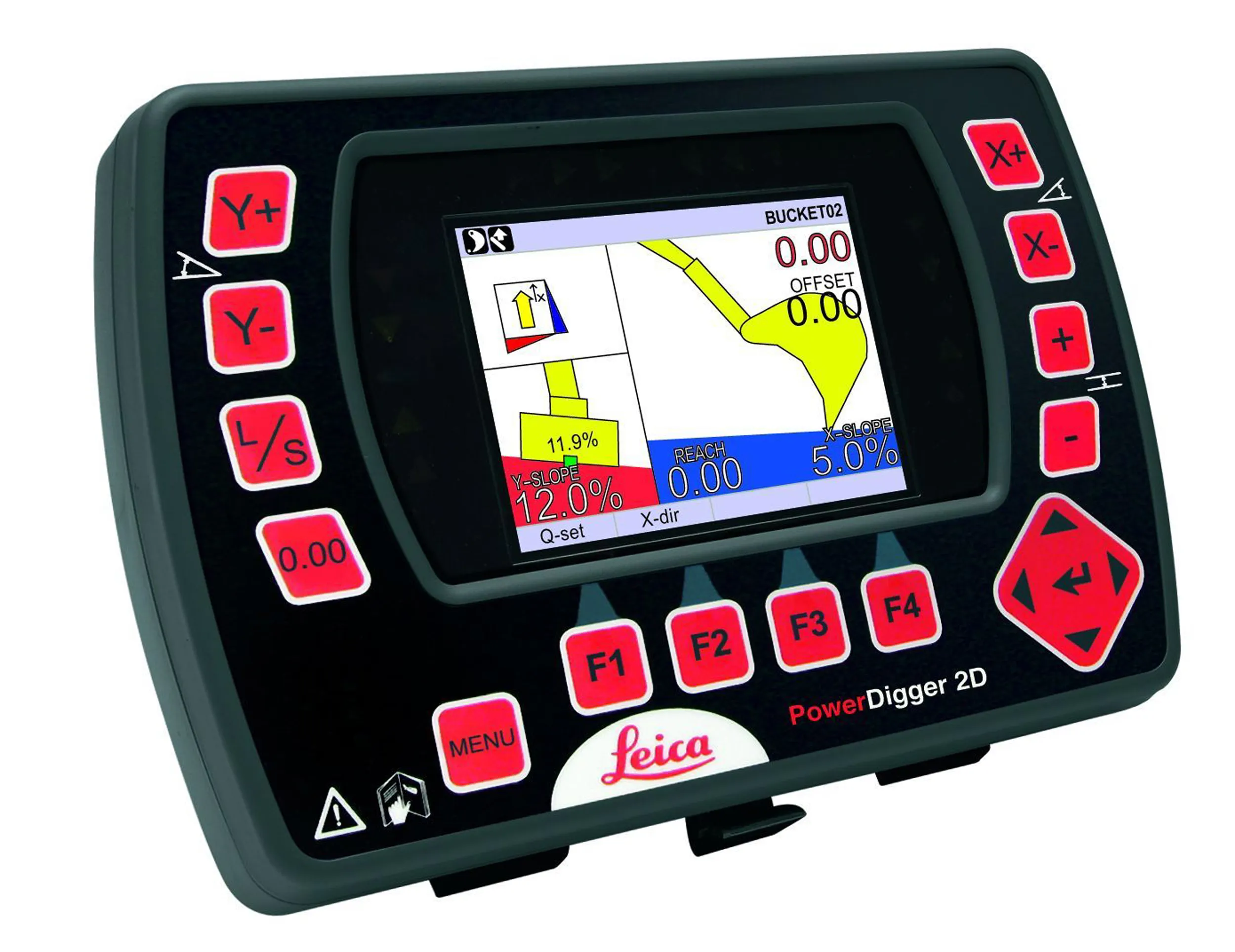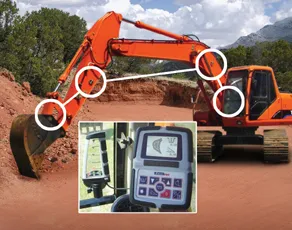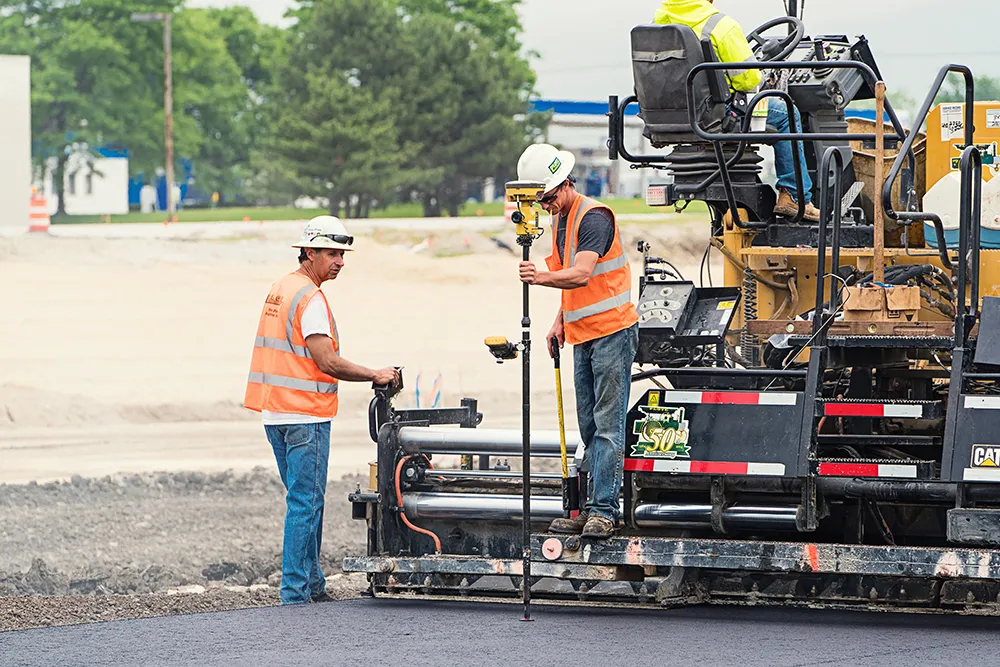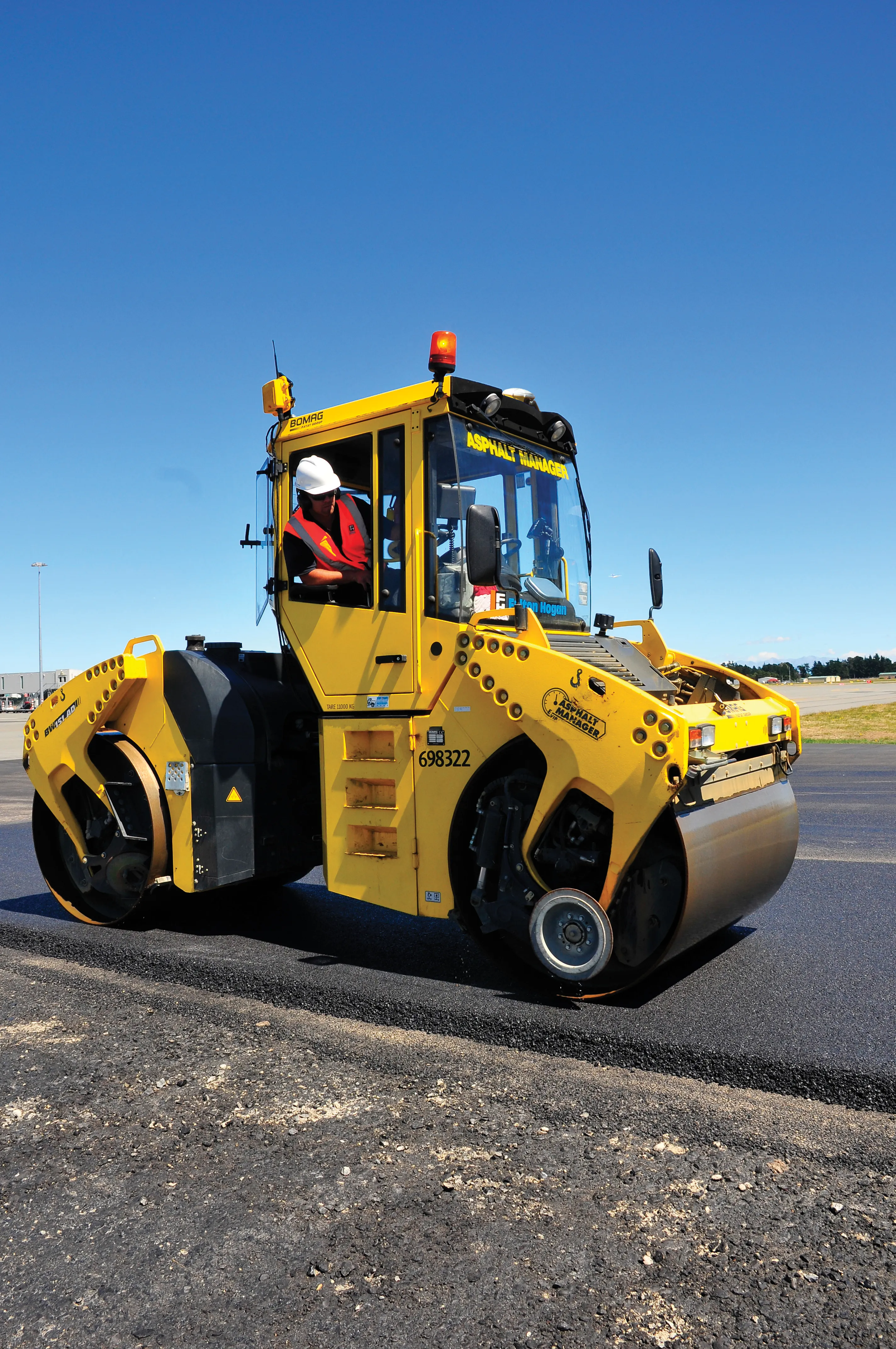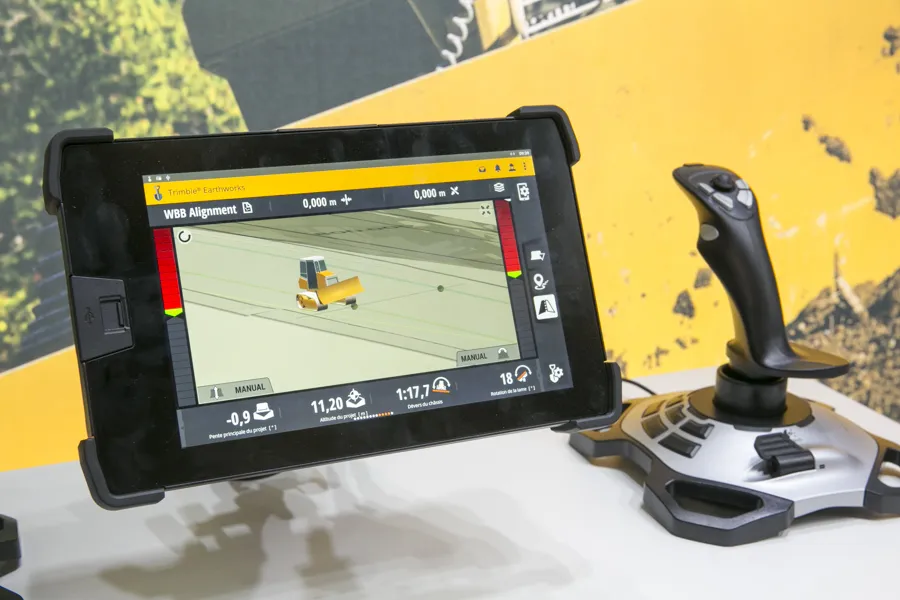
According to Martin Wagener, worldwide product implementation manager for Trimble explained: “There are the same sensors for the dozer as on the excavator.”
The compact and rugged inertial motion sensors (IMUs) are mounted on the dozer and measure position, motion and angles in three axes. These solid state units have a higher degree of accuracy than the previous technology.
“The most visible thing is that the antenna have been moved from the blade onto the cab.” Placing the dual antenna on the cab improves safety and Wagener said, “There’s no need to climb onto the blade any more.”
The system is also more accurate and, Wagener said: “The target was to create a system at least as accurate as the mast mounts but we’re getting much better results.”
Both EarthWorks packages share some operating features. One of the most important is the over-cut protection system and Wagener said: “It actually stops you from taking out too much material.”
This will prevent the excavator bucket or dozer blade from digging below the level set in the model, reducing the risk of costly reworking. Meanwhile a line representation on the screen shows the operator where to work.
In addition, customers buying the EarthWorks packages, whether for dozer or excavator, also have a five-year deal for software updates.
According to Wagener: “We’re releasing new software versions regularly and as a customer you automatically get every new upgrade.”


